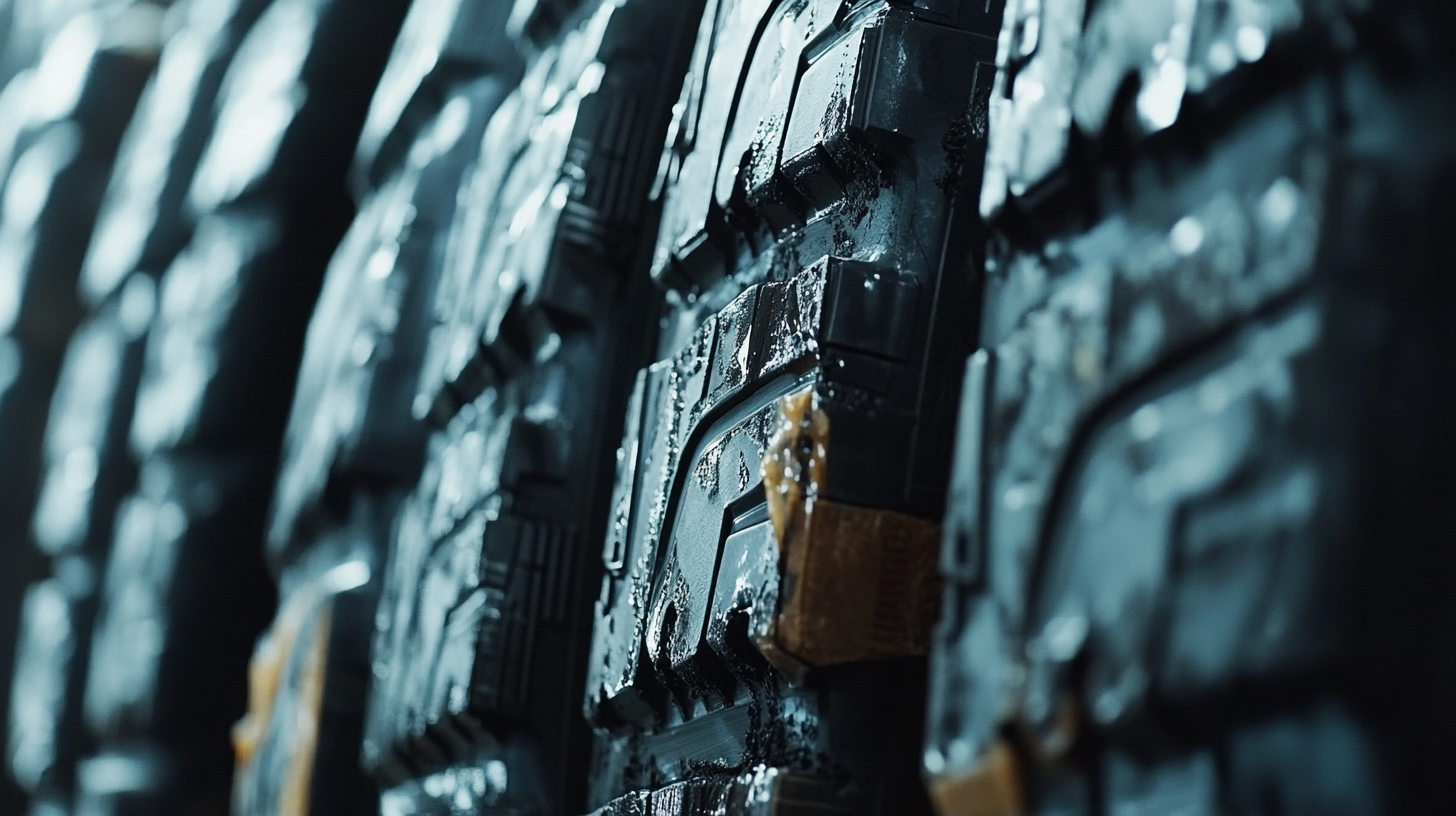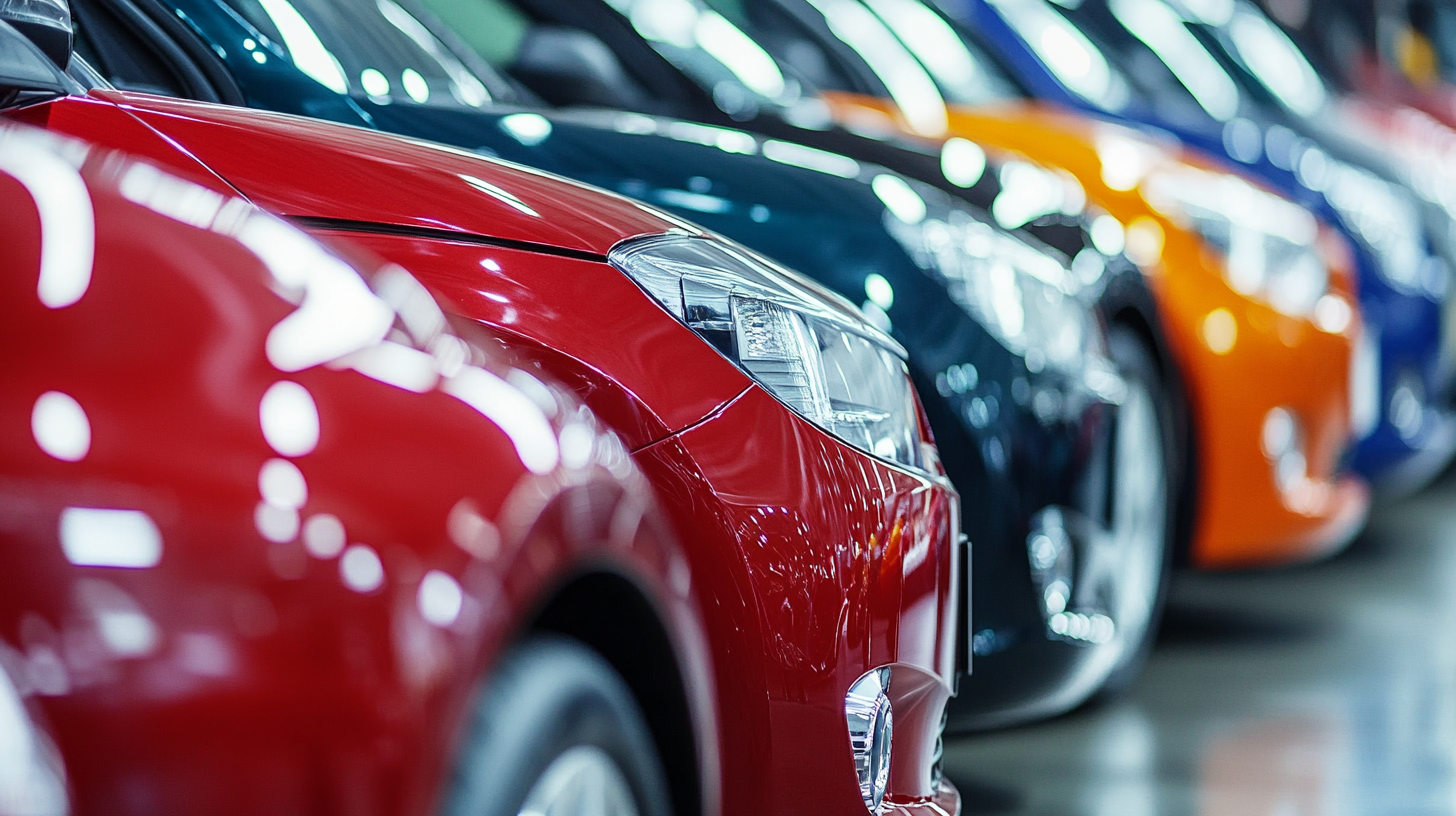Needless to say, the automotive industry is undergoing rapid changes, with an insatiable demand for high-quality production and efficient methods at this hour. As international buyers make their way through the competitive arena, further emphasizing the need to optimize automotive mold production processes cannot be overemphasized. Enhancing technologies and innovative approaches can only harness advanced capabilities for manufacturers in meeting market demands and customer expectations. By focusing on these strategies, stakeholders will achieve unprecedented levels of productivity and cost-effectiveness on which success in a growing market relies.
On the other hand, the automotive mold sector is currently going through this transformation, spurred by developments in consumer culture and technology. The transportation of the future so heavily dependent on electric and autonomous vehicles must also come with a high demand for automotive molds. This blog will discuss approaches that will help maximize efficiency in automotive mold production, thereby giving insights that international buyers need to consider to stay competitive. Best practices in this modern world can guide the manufacturers to strengthen not only efficiency but also sustainability and profitability in the automotive ecosystem.

The automotive industry is undergoing rapid changes, where the call for new and innovative manufacturing methods grips the scene. Understanding the present-day developments of automotive mold production stands important to the manufacturers and international buyers desiring to optimize their operations. Presently precision engineering and advanced material usage lie at the forefront to create molds that improve the automotive parts' quality while also minimizing the lead time of production. The recent upturns, in the mold-making business, include seeing new technologies like additive manufacturing and high-speed machining come to life. These technologies can now achieve complex geometries that the old methods could not easily address. Besides, when automation and smart manufacturing principles are introduced into a mold shop, they offer real-time monitoring of the process, ensuring that production consistency is maintained and waste minimized. This trend towards efficiency is not only in terms of time; rather, it encompasses a more holistic approach to sustainability, with manufacturers prioritizing reducing carbon footprint due to global ecological concerns. Furthermore, understanding regional dynamics of the automotive supply chain is vital for prospective partners abroad that might be interested in becoming international buyers. Different regions bear different dynamics, mainly determined by labor costs, governmental regulations, and technological infrastructure. All these factors present challenges that force the buyer to look not just for partners that meet their quality standards but also those whose business philosophies resonate with these buyers' own strategic wishes for growth and sustainability. The actors in the market would be greatly informed about trends in this sector, allowing them to make better decisions and capitalize on the opportunities buoying this new emerging market, as automotive mold production keeps changing.

The mold production industry is currently under drastic transformation to ensure that maximum efficiency is obtained mainly from the mold production systems, especially for international buyers going higher into the competitive market. Key technology includes the manufacturing process with which these companies are able to face the increasing pressures regarding innovation and efficiency. In tandem with advanced materials and cutting-edge techniques, a firm is judged for its competitiveness.
3D Printing Technologies are an important advancement toward the future of manufacturing molds. This supplements the time taken to complete production, and it results in varied customizable designs. It allows the manufacturers to use more advanced digital fabrication methods for achieving very complex mold geometries that have been otherwise difficult to achieve. Shift to manufacturing by additive manufacturing reduces the waste developed as well as the lead time in production and hence increases efficiency.
Furthermore, those virtual types, for instance, male and female crash test dummies, are now indispensable in the manufacture of molds. These enable effective engineering activities such as safety testing and biomechanical research in order to meet regulatory standards while ensuring safety of the passengers involved in the testing. The adoption of the technologies will empower the manufacturers to adequately respond in a very dynamic manner to the changing trends of the market and subsequently improve their competitiveness in the innovation and efficiency demanding marketplace.

With the growing demand for efficient mold production in the automotive industry, designs for vehicles are becoming increasingly complex. Concurrently, there is an ever-increasing pressure for faster turnaround times. Buyers are now able to procure mold faster via strategic partnerships and data-informed decisions. The global automotive mold market is predicted to grow from USD 22.4 billion in 2020 to USD 29.2 billion in 2025 according to MarketsandMarkets, indicating a buying potential for the buyers to procure faster within a competitive environment.
International buyers may deploy one or more advanced technologies such as additive manufacturing and computer-aided design (CAD). Additive manufacturing provides customization and precision, thereby shortening lead times and making molds less expensive. According to a study published in the Journal of Manufacturing Science and Engineering, companies that use 3D printing in the mold production stage can reduce their production time by up to 70%. Therefore, international buyers will find it beneficial to implement these technologies, in their optimization of supply chains and quicker adaptation to market requirements.
Keeping open communication lines with suppliers is very important for mutual success. Regular communications promote collaboration and transparency and allow buyers to know suppliers' production capabilities and timelines. According to the Supply Chain Management Review, 63% of organizations prioritizing supplier collaboration reported improved quality and rectified costs. With these initiatives in place, international buyers will be able to manage the challenges posed by the automotive mold market while maximizing procurement efficiency.

Sustainability has become the key issue with respect to the production of automotive molds, indicating a larger movement toward eco-aware working methods within the manufacturing industry. With buyers from abroad looking to find reliable partnerships in an expanding market, companies with an inherent bias toward sustainability have gained a head start in their competition. By utilizing eco-friendly materials and processes, automotive MOLD manufacturers can work on their carbon footprint while enticing eco-conscious consumers and corporations.
Sustainable practices usually entail the use of recycled materials that decrease waste and help with cutting down on production costs. New innovations such as water-based adhesives and bio-resins are gaining popularity as alternatives that are less harmful compared to traditional chemicals. Some manufacturers also invest in energy-efficient equipment that plays an important role in lowering energy consumption as part of what the world must do in the fight against climate change. The trend is boosting company performance while strengthening their sustainability claims, making them attractive partners for buyers from abroad concerned with corporate responsibility.
With an ongoing evolution within the automotive sector, sustainability concerns will likely be more accentuated in setting standards for production in the years to come. In the meantime, automotive MOLD producers adopting such practices may win a competitive advantage while doing good for the environment. The whole move toward sustainability represents a fundamental shift in consumer expectations, where eco-friendly practices become an obligation on which survival rests in a fast-paced market.
Being exposed to the dynamics of the automotive industry and mold production trends, they began to assume great importance. One of the remarkable transition patterns indeed is the injection of advanced manufacturing techniques such as additive manufacturing and automation into the mold-making process. These techniques contribute towards better production processes, design flexibility, and customization. International buyers are now looking for quality molds at an economical price but delivered on short notice; hence, the manufacturers have to comply with the demands.
Another very significant trend is sustainability which strongly influences mold production. Many of the automotive companies worldwide are now focusing more on environmental practices; this is putting pressure on mold producers to look for solutions involving recycled materials and energy-efficient processes. Such a transition not only is in tune with the global concern for sustainability but provides manufacturers with a competitive edge in a market where consumers are becoming more environmentally conscious.
The trends are, therefore, heavily affecting the global market. Demand for technologically advanced solutions and sustainability will definitely have shifting consequences on the market leaders. Countries that will embrace these innovations in mold production might consequently position themselves as leaders in the international automotive supply chain, with consequent implications on their economy and modern buyers' satisfaction. The future of automotive mold production is undeniably intertwined with these trends that bring about transformation for improved global practices in efficiency, sustainability, and competitiveness.
The current landscape emphasizes precision engineering and the use of advanced materials to enhance the quality of automotive parts while reducing production lead times.
Recent advancements include additive manufacturing and high-speed machining, which facilitate the creation of complex geometries and improve production efficiency.
Automation and smart manufacturing allow for real-time monitoring of production processes, ensuring consistency, minimizing waste, and enhancing overall efficiency.
Sustainability is increasingly prioritized, with manufacturers focusing on reducing their carbon footprint and exploring the use of recycled materials and energy-efficient processes.
Understanding regional dynamics is crucial as market conditions vary due to labor costs, governmental regulations, and technological infrastructure, affecting partnership decisions.
As consumers become more eco-conscious, there is a growing emphasis on environmentally friendly practices in mold production, prompting manufacturers to adopt sustainable solutions.
Manufacturers must adapt by producing high-quality molds that are cost-effective and delivered quickly, incorporating advanced manufacturing technologies to meet these demands.
Advancements are likely to reshape market leaders, with countries that embrace innovation in mold production enhancing their positions in the international automotive supply chain.
Future trends include continued integration of advanced manufacturing technologies, increased design flexibility, customization, and a stronger focus on sustainability.
Being informed empowers stakeholders to make better decisions and capitalize on opportunities within the evolving automotive mold production market.